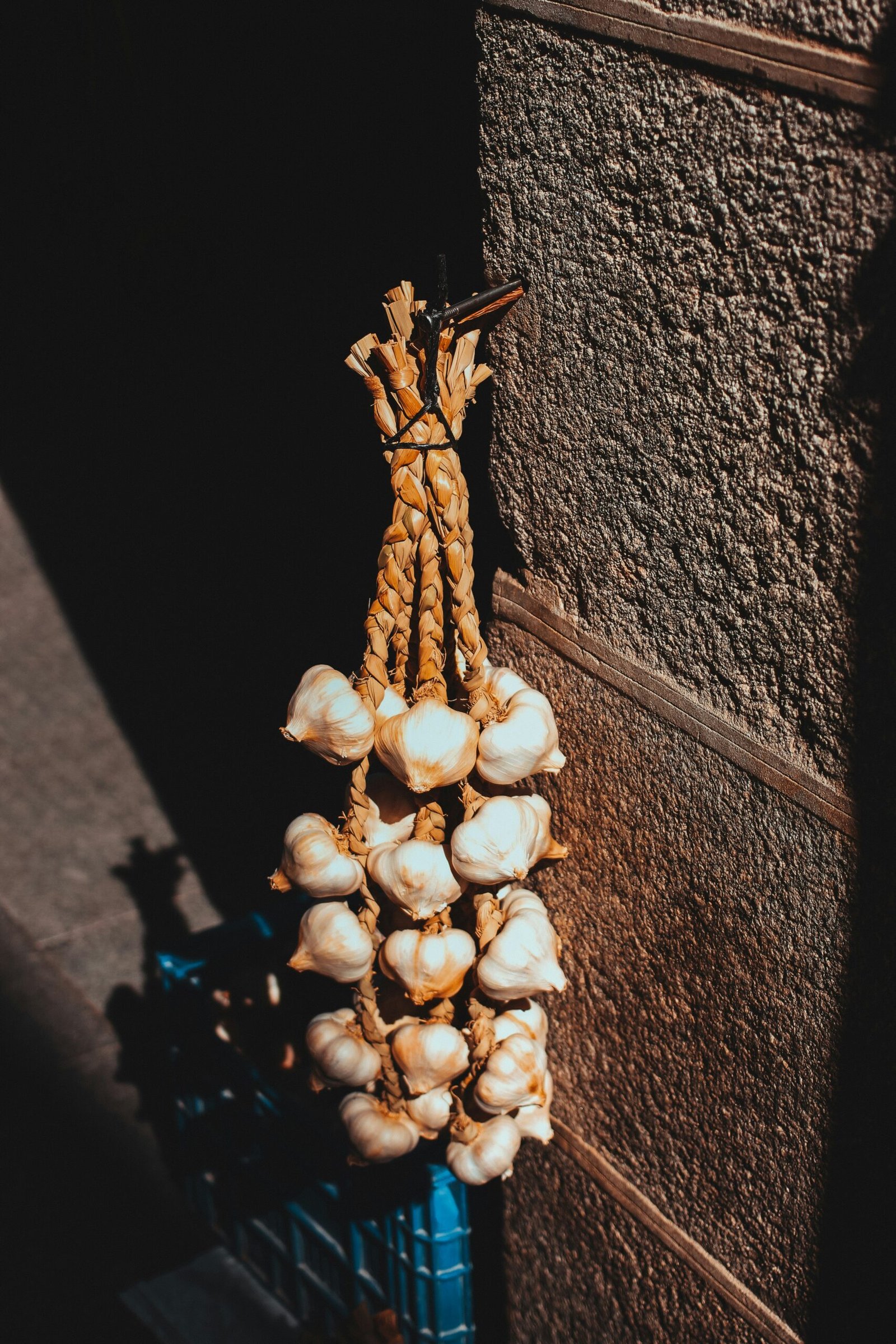Vampires and Garlic: Myth, History, and the Power of Protection
The image of a vampire recoiling from a clove of garlic is iconic in folklore and pop culture. But where did this association begin? Is there any truth behind it or is it all superstition? This article dives deep into the origins of vampire myths, the role of garlic as a protective agent, and other legendary tools used to repel or destroy these nocturnal creatures.
👉 More about Vampires
Garlic vs. Vampires: Origins of the Myth
Garlic has long been considered a powerful protector in various cultures. Its pungent smell, medicinal properties, and symbolic purity made it a natural candidate for warding off evil.
Historical Roots:
- Eastern European folklore: In countries like Romania, Bulgaria, and Serbia, garlic was placed in homes, worn around the neck, or even stuffed into the mouths of corpses to prevent vampiric resurrection.
- Greek traditions: Garlic was used to repel the vrykolakas, a type of undead creature similar to vampires.
- Symbolism: Garlic represented health, vitality, and spiritual cleanliness, qualities that stood in direct opposition to the decay and corruption of vampires.
Why Garlic?
- Strong odor: Believed to overwhelm or repel supernatural entities.
- Antimicrobial properties: Associated with healing and protection.
- Spiritual purity: Used in rituals to cleanse spaces and bodies.
Other Vampire Repellents and Killers: Tools of the Trade
Garlic isn’t the only weapon in the vampire hunter’s arsenal. Across cultures and centuries, people have developed a wide range of methods to keep vampires at bay or eliminate them entirely.
🔆 Sunlight
Effect: Destroys or severely weakens vampires.
Origin: Popularized by 20th-century films; not present in older folklore.
✝️ Religious Symbols
Effect: Crosses and holy water repel vampires, especially in Christian traditions.
Origin: Vampires are seen as unholy beings, so sacred items burn or drive them away.
🪙 Silver
Effect: Burns or harms vampires.
Origin: Borrowed from werewolf lore; silver symbolizes purity and incorruptibility.
🪵 Wooden Stakes
Effect: Piercing the heart kills the vampire.
Origin: Eastern European burial practices used staking to prevent corpses from rising.
🌹 Hawthorn and Rowan
Effect: Protective plants used in charms, amulets, and barriers.
Origin: Rooted in Celtic and Slavic traditions as natural warding tools.
🪞 Mirrors
Effect: Vampires cast no reflection.
Origin: Symbolizes the absence of a soul or spiritual essence.
Vampires in Pop Culture: Evolving Myths
Modern portrayals of vampires have reshaped traditional beliefs. In some stories, garlic is ineffective, while others introduce new weaknesses or strengths.
Examples:
- Dracula (1897): Bram Stoker’s novel cemented garlic as a vampire deterrent.
- Buffy the Vampire Slayer: Combines folklore with modern weaponry.
- Twilight: Vampires sparkle in sunlight and ignore garlic.
- True Blood: Vampires are vulnerable to silver and sunlight, but garlic is irrelevant.
Global Vampire Variants and Their Weaknesses
Vampire-like creatures exist in nearly every culture, each with unique traits and repellents.
| Region | Creature | Repellents/Weaknesses |
|---|---|---|
| Eastern Europe | Strigoi | Garlic, stakes, holy water |
| China | Jiangshi | Mirrors, bells, sticky rice |
| Philippines | Aswang | Salt, garlic, prayers |
| India | Vetala | Mantras, sacred fire |
| Africa | Obayifo | Charms, ritual cleansing |
Garlic’s Legacy in Folklore and Magic
Garlic remains one of the most iconic symbols of protection in folklore. From vampire myths to magical rituals, it embodies the human desire to guard against darkness, using something simple, natural, and powerful.
Photo by Ramón Salinero on Unsplash

